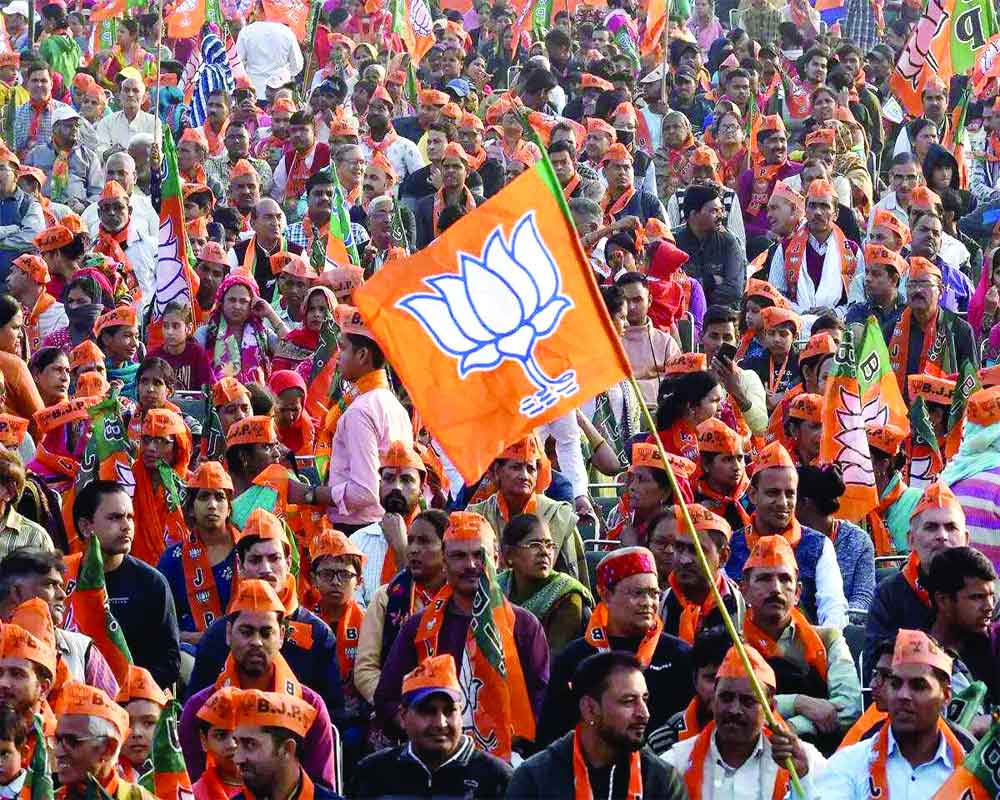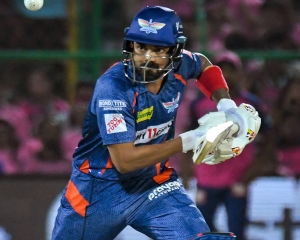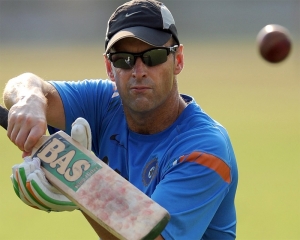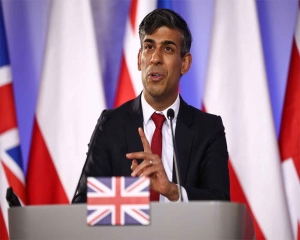As the battle intensifies, the BJP faces the formidable challenge of safeguarding its Hindu vote bank amidst the evolving electoral dynamics
A very unique, a kind of first time, battle is being fought in politically significant 16 Lok Sabha seats of western Uttar Pradesh, which votes in the first phase on April 19 or the second phase on April 26. Prime Minister Narendra Modi’s whirlwind tour of the region is largely to counter the not so visible division in the Hindu votes. While the attack has been more direct on the Congress (its manifesto to be more specific) but an eye has also been kept on the moves of the BSP.
This part of the state has two dominant communities — the Jats and the Muslims. The two together formed the part of former Prime Minister Chowdhary Charan Singh’s electoral calculus. The Dalits, specially the Jatavs, numerically have the third largest presence. Charan Singh last contested a Lok Sabha polls in 1984 and managed to hold ground despite the Rajiv Gandhi juggernaut passing through the country. The Jat leader did not live very long after the polls and his traditional seat came to his son Chowdhary Ajit Singh in 1989. Here started the story of the shrinking of the fortunes of the Charan Singh Kisan politics.
Ajit Singh in 1989 committed the grievous error of challenging his father’s close lieutenant, Mulayam Singh Yadav’s claim to the Chief Minister’s chair of Uttar Pradesh. Mulayam Singh enjoyed backing of party veterans like Chowdhary Devi Lal and then Young Turks like Lalu Prasad Yadav and Nitish Kumar. Ajit lost and herein started the erosion in political stature of Charan Singh’s family.
Mulayam Singh in the 1990s, pushed a combination of the Muslims and non-Jat landholding agricultural communities like the Yadavs, Tyagis and to an extent the Gujjars under the umbrella of Samajwadi Party.
This decade also saw rise of Dalit icon Kanshi Ram and Mayawati and their Bahaujan Samaj Party. Mulayam Singh initially sought an alliance with them to add large numbers of Jatavs to counter the Jat dominance, it, however, ended in a bitter dispute as Mayawati decided to piggy ride on the BJP support to become chief minister. So by the turn of the millennium west UP had three major political forces Samajwadi Party, BSP and the BJP, correspondingly shrinking the influence of Chowdhary Ajit Singh’s Rashtriya Lok Dal and of course the Congress.
Entering into the second decade of the 21st century BJP had come to create its own set of Jat leaders. With the rise in the Ram Mandir sentiments and arrival of Narendra Modi on the scene, consolidating the non-Jat, other backward classes (OBC) votes in addition to the upper castes created a Hindu vote bank which was best exemplified in the loss of Chowdhary Ajit Singh and his son Jayant Chowdhary both in the 2014 and 2019 Lok Sabha elections.
Since 2019 a lot of developments have taken place. The region saw a huge farmer unrest which was expected to adversely affect the fortunes of the BJP in the 2022 assembly polls but that did not happen. The coming together of Jayant Chowdhary and Mulayam Singh Yadav’s son Akhilesh Yadav was not of much consequence as chief minister Yogi Adityanath held on the challenge based largely on an affirmative administration and also much improved law and order situation.
This time around another interesting battle is building up. Jayant Chowdhary moving to BJP side initially looked to have a solved a lot of problem for the opposition alliance, which quickly resolved their seats arrangement issues. However since then the third factor — BSP has entered the fray. The direct fight between the ruling alliance and the opposition block has now a third element to it.
The BSP’s strategy in the distribution of tickets is to build its core vote bank of Jatavs by using discontentment among specific communities to its advantage and hoping that Muslims would support its candidates wherever they are in position of strength vis-a-vis the opposition alliance. How does that affect the BJP?
Playing on the bruised pride of the Thakur and Tyagi communities, on being ignored by the BJP, the BSP has fielded Rajput candidates in Ghaziabad and Gautam Buddh Nagar and a Tyagi from Meerut. In Muzaffarnagar, it has played the most backward caste (MBC) card by positioning a Prajapti candidate against BJP’s sitting MP Sanjeev Balyan. MBCs have remained with the BJP since the 1990s.
On such seats where there is huge presence of minority voters and where the opposition SP-Congress alliance is seen to be strong, BSP has another strategy. It has fielded Muslim candidates from seats that have Muslim population to the tune of 40 to 45 percent. The presence of these candidates have made the contests very tight. Given the scenario, the challenge for Modi-led BJP is to not let its Hindu vote bank disintegrate.
(The writer is a political analyst and president, Centre for Reforms, Development & Justice; views are personal)


























